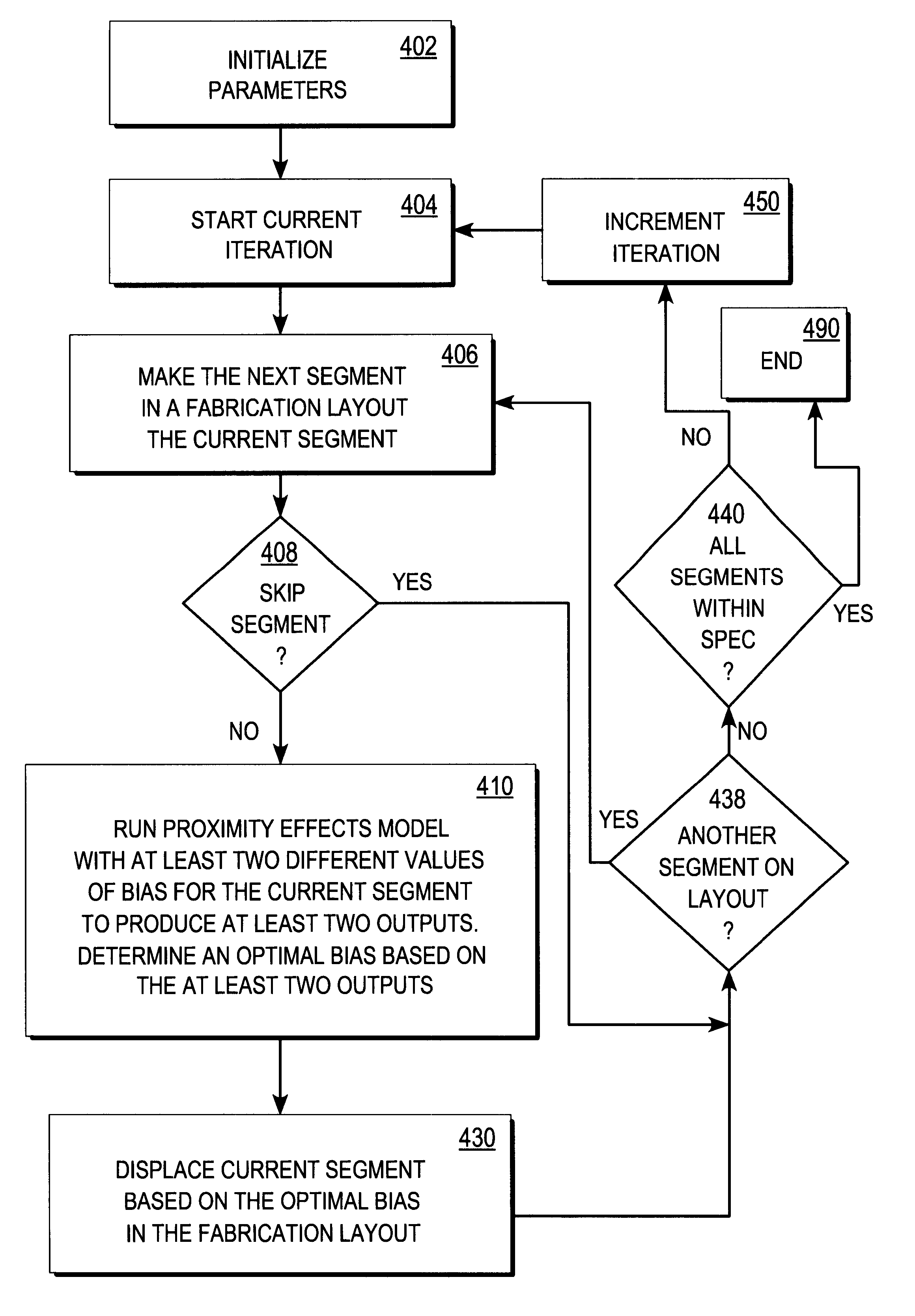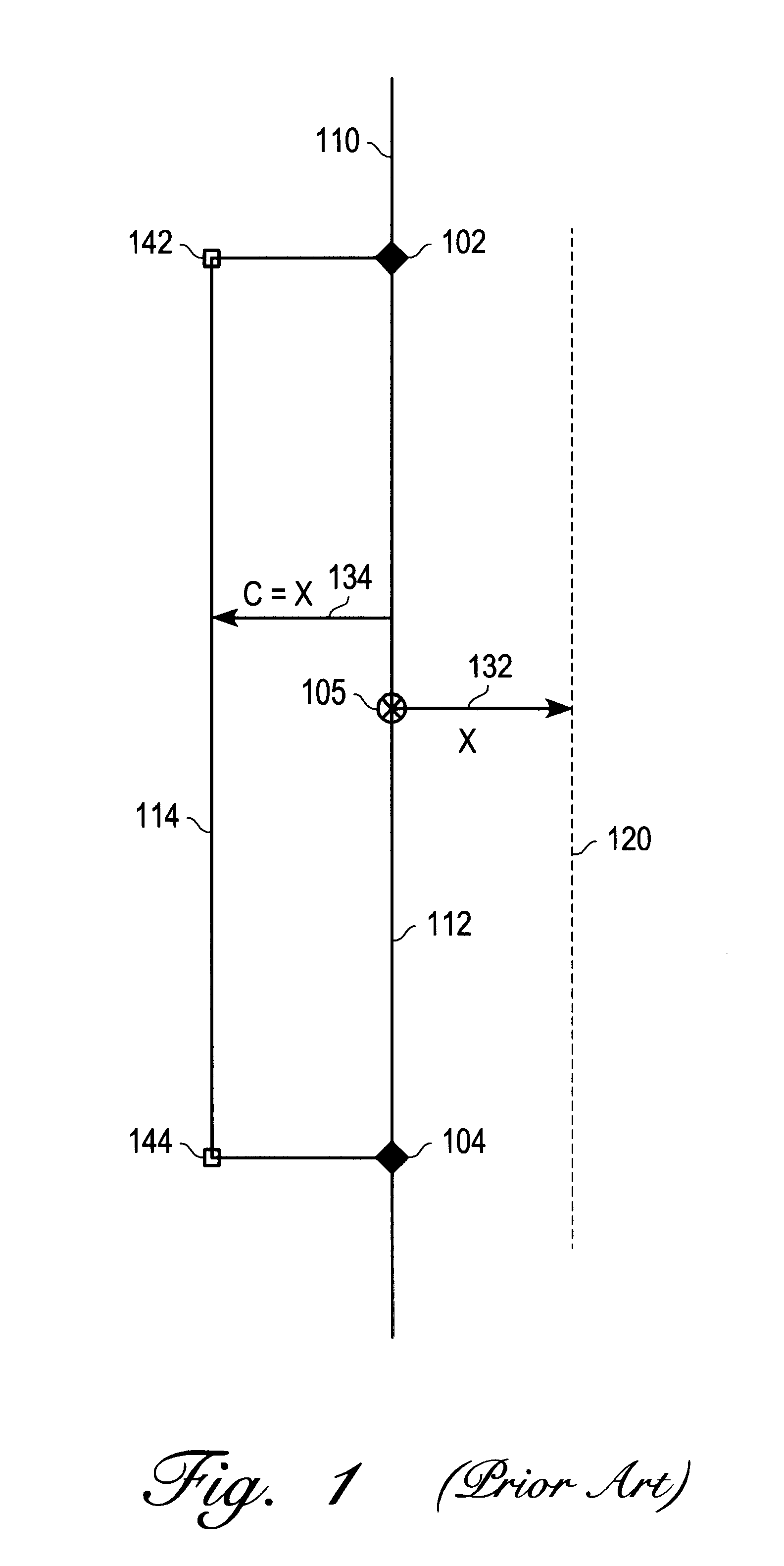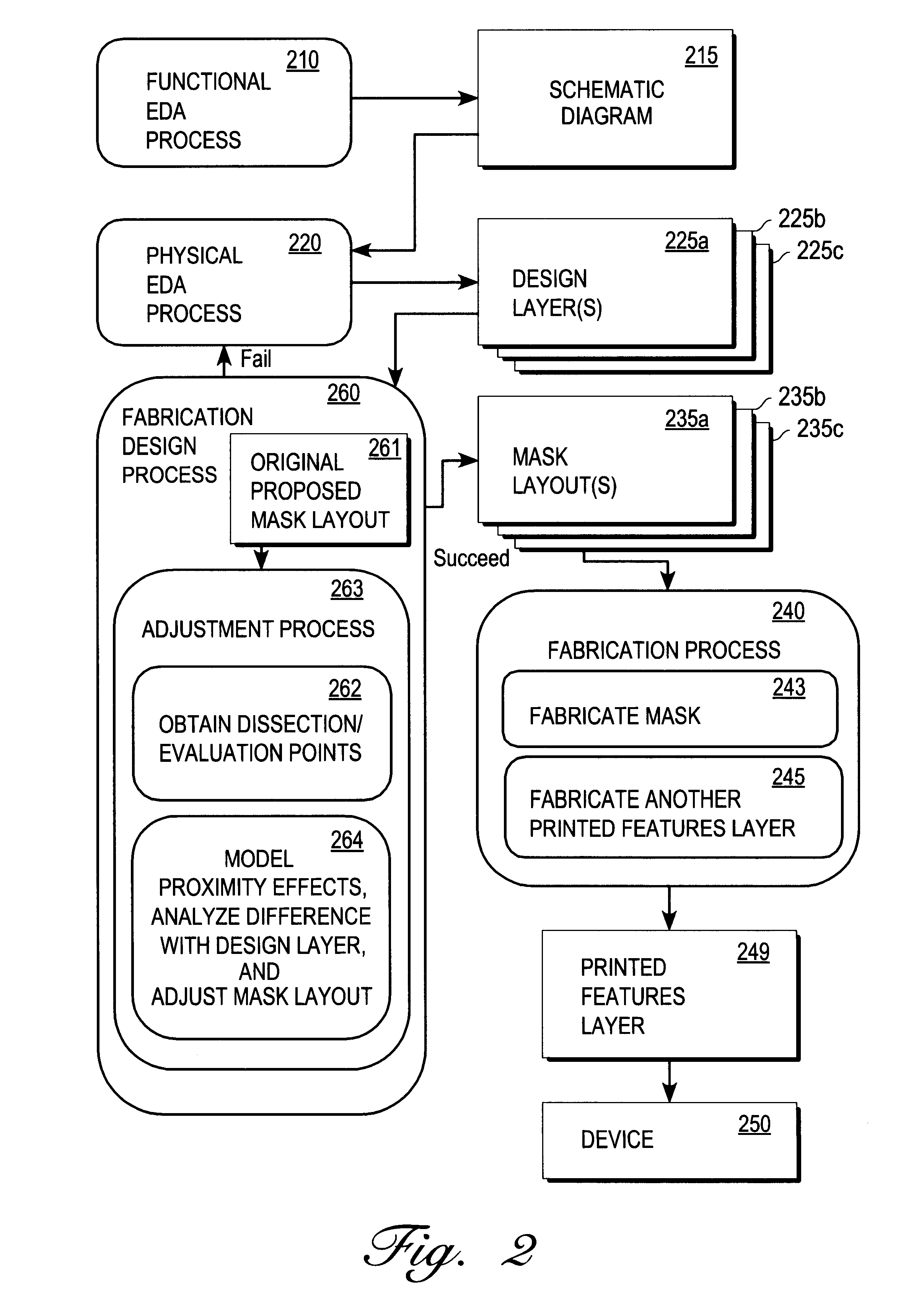Displacing edge segments on a fabrication layout based on proximity effects model amplitudes for correcting proximity effects
a technology of proximity effects and fabrication layouts, applied in the field of computing corrections, can solve the problems of insufficient linear relationship between changes in printed features layers such as silicon wafer layers, and features with decayed shapes and sizes,
- Summary
- Abstract
- Description
- Claims
- Application Information
AI Technical Summary
Problems solved by technology
Method used
Image
Examples
embodiment 412a
In embodiment 412a, the calculation of CD includes the slope of the amplitude profile at the evaluation point according to Equation 4, below. The correction term, CD, is computed as follows:
CD=(I.sub.e -T) / s (4)
where I.sub.e is the amplitude at the evaluation point, T is the amplitude threshold value for that amplitude, and s is the slope of the amplitude profile at the evaluation point. Equation 4 is an estimate of the distance from the evaluation point to the point where the amplitude profile attains the value of the amplitude threshold. Equation 4 is a very good estimate when the evaluation point is in a portion of the profile that is near linear, or the threshold crossing point is nearby. Equation 4 is a poor estimate when the evaluation point is in a curved portion of the profile, or far from the point where the profile attains the value of the threshold. For example, in FIG. 3B, Equation 4 would be a poor estimate of the correction needed on curve 330 if the evaluation point w...
example embodiment
With Inverse Proximity Effects Model
FIG. 7 is a flow diagram showing an iterative adjustment of a fabrication layout using an inverse proximity effects model, according to one embodiment of adjustment process 263 from FIG. 2.
In step 702, parameters used by the techniques are initialized. In step 704, the current iteration begins. A segment of the fabrication layout is visited only once per iteration. In step 706, one of the segments not yet visited in this iteration is made the current segment. In step 708, it is determined whether the current segment should be skipped. If the current segment is skipped, control passes to step 738 to determine whether another segment remains to be visited in the layout. If the current segment is not skipped, control passes to step 710 in which the inverse proximity effects model is run for the current segment. The inverse proximity effects model is run using the edges in the design layer as input. Then the output amplitudes indicating edges for the ...
PUM
| Property | Measurement | Unit |
|---|---|---|
| interior angles | aaaaa | aaaaa |
| distance | aaaaa | aaaaa |
| distance | aaaaa | aaaaa |
Abstract
Description
Claims
Application Information
 Login to View More
Login to View More - R&D
- Intellectual Property
- Life Sciences
- Materials
- Tech Scout
- Unparalleled Data Quality
- Higher Quality Content
- 60% Fewer Hallucinations
Browse by: Latest US Patents, China's latest patents, Technical Efficacy Thesaurus, Application Domain, Technology Topic, Popular Technical Reports.
© 2025 PatSnap. All rights reserved.Legal|Privacy policy|Modern Slavery Act Transparency Statement|Sitemap|About US| Contact US: help@patsnap.com



